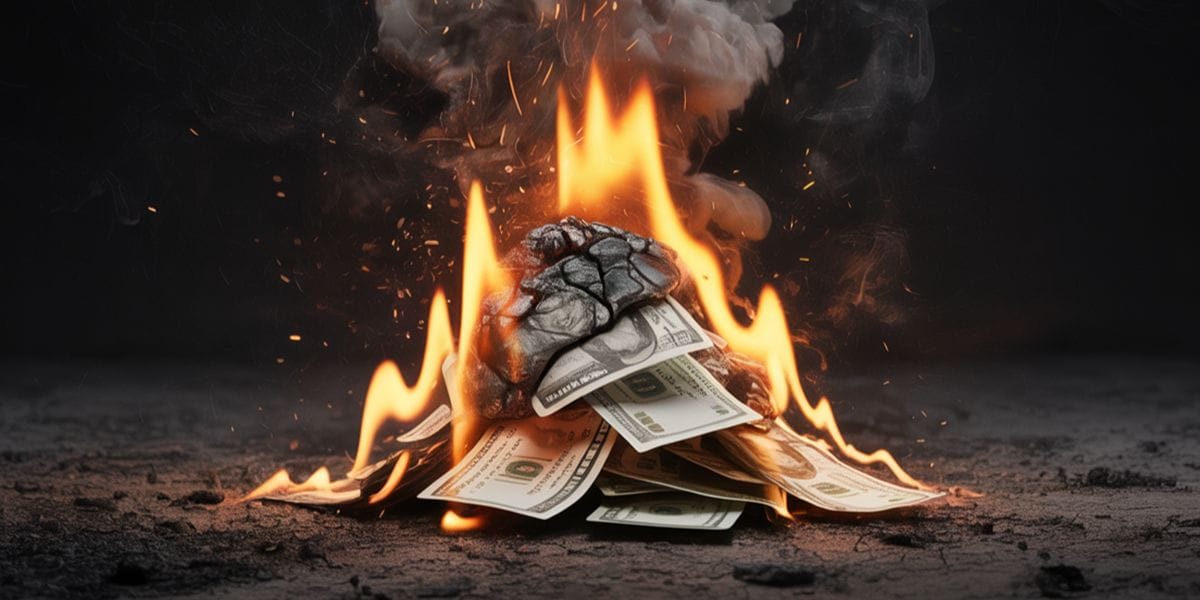- Live Life Grow Wealth
- Posts
- This Is, Officially, the 3rd Priciest Stock Market in Over 150 Years
This Is, Officially, the 3rd Priciest Stock Market in Over 150 Years

Today’s Headline
This Is, Officially, the 3rd Priciest Stock Market in Over 150 Years — and There's No Mistaking What Comes Next for Stocks, Based on History
Let me start by saying this — it’s a strange time to be an investor.
Stocks are soaring. Everyone's talking about artificial intelligence, tech innovation, and the unstoppable growth of the market. It feels exciting. But underneath all that buzz lies a simple fact: this is now the third most expensive stock market we've seen in the past 150 years.
Yes, you read that right — in more than a century and a half of data, only two other periods had pricier markets than the one we’re in now. That’s not something I say to scare you, but it’s definitely something we need to talk about.
🚀 Want to Unlock the Secrets of Top-Performing Founders & Investors?
If you're serious about growing your wealth, there's one power combo you need to tap into: relationships and results.
Power Pair is a newsletter that takes you inside the private worlds of ultra-high achievers in startups, investing, and finance — and shows you how they’re winning together.
Their edge? They don’t go it alone — and you shouldn’t either.
👉 Click here to see how elite minds partner up to create real wealth
What Does “Expensive” Even Mean in the Stock Market?
When we say the market is expensive, we’re not talking about the dollar price of a stock. We're talking about valuation.
Valuation measures how much investors are willing to pay for every $1 of a company’s earnings. One of the most common ways to do this is the Price-to-Earnings (P/E) ratio. The higher it is, the more expensive stocks are.
Right now, the average P/E ratio of U.S. stocks is significantly higher than the historical average. That suggests investors are pricing in a lot of future growth — maybe too much.
The Two Times the Market Was More Expensive
The only two times in history when stocks were more expensive were:
The Dot-Com Bubble (1999–2000)
Tech stocks were flying high. Companies with no profits and barely any revenue were being valued in the billions. Everyone thought the internet would change the world — and it did — but not every internet company survived.The Late 1920s (Before the Great Depression)
Economic optimism was sky-high. People were buying stocks with borrowed money, thinking the good times would never end. Then 1929 happened, and the market collapsed.
Those periods were followed by sharp corrections. That doesn’t mean we’ll see the exact same thing now, but it’s a signal that we should be cautious.
Why Is the Market So Expensive Right Now?
There are a few reasons:
AI Mania: Investors are betting big on artificial intelligence. Companies like Nvidia, Microsoft, and Meta are leading the charge. Their valuations have pushed the entire market upward.
Low Interest Rates (Until Recently): For most of the past decade, borrowing money was cheap. That encouraged people and companies to invest heavily in growth.
Fear of Missing Out (FOMO): A lot of people are jumping into the market because they don’t want to miss the rally — even if prices seem high.
Strong Earnings (from a Few Big Companies): The S&P 500 is up, but if you look closely, it’s mostly driven by a handful of mega-cap tech stocks.
What History Tells Us About Expensive Markets
History doesn’t repeat exactly, but it often rhymes. When the market is this expensive, one of a few things usually happens:
Earnings catch up
Companies grow fast enough that their earnings justify the high prices. This is the best-case scenario.Sideways movement
Stocks go nowhere for years while earnings rise slowly. Eventually, valuations get back to normal.A correction
The market drops sharply as investors realize they’ve been too optimistic.
Here’s What Worries Me
Concentration Risk: The top 5 companies in the S&P 500 make up over 25% of its total value. That’s more concentrated than at almost any point in history. If just a few of these companies stumble, the whole market could suffer.
Rising Interest Rates: Higher interest rates make borrowing more expensive and reduce the value of future profits. That’s not good for growth stocks.
Retail Speculation: We’re seeing a rise in risky behavior again — options trading, meme stocks, and crypto booms. These are often signs that the market is overheating.
But It’s Not All Doom and Gloom
Let’s not forget — the U.S. economy is still growing. Innovation is alive and well. People are working, businesses are adapting, and new industries (like AI, clean energy, and biotech) are gaining traction.
Also, just because the market is expensive doesn’t mean a crash is guaranteed. It just means we need to be more thoughtful about how we invest.
What I’m Doing With My Own Money
Now let me share my personal plan. I’m not pulling all my money out of the market, but I’m definitely not blindly buying everything either.
Here’s my approach:
I’m diversifying more
I’m spreading my investments across different sectors, countries, and asset types. That way, I’m not overly exposed if one area crashes.I’m focusing on quality
I look for companies with strong cash flow, solid balance sheets, and real competitive advantages. Not just hype.I’m keeping some cash
Having dry powder means I can buy more when prices drop. It also gives me peace of mind.I’m avoiding the noise
The media loves to hype up fear and greed. I tune out the daily drama and focus on long-term fundamentals.
Learn from this investor’s $100m mistake
In 2010, a Grammy-winning artist passed on investing $200K in an emerging real estate disruptor. That stake could be worth $100+ million today.
One year later, another real estate disruptor, Zillow, went public. This time, everyday investors had regrets, missing pre-IPO gains.
Now, a new real estate innovator, Pacaso – founded by a former Zillow exec – is disrupting a $1.3T market. And unlike the others, you can invest in Pacaso as a private company.
Pacaso’s co-ownership model has generated $1B+ in luxury home sales and service fees, earned $110M+ in gross profits to date, and received backing from the same VCs behind Uber, Venmo, and eBay. They even reserved the Nasdaq ticker PCSO.
Paid advertisement for Pacaso’s Regulation A offering. Read the offering circular at invest.pacaso.com. Reserving a ticker symbol is not a guarantee that the company will go public. Listing on the NASDAQ is subject to approvals.
How You Can Stay Smart as an Investor
Even if you're new to investing, here’s how you can protect yourself in a pricey market:
Don’t chase trends
Just because something is going up doesn’t mean it will keep going. Ask yourself, “Would I still buy this if the price dropped 30%?”Stick to a plan
Have a clear goal and strategy. Are you investing for retirement? Passive income? Growth? Let that guide your decisions.Review your risk tolerance
If the market dropped 20% tomorrow, how would you feel? If you'd panic, you might be taking on too much risk.Think long-term
Markets rise and fall, but over decades, they tend to go up. Time in the market beats timing the market.
Final Thoughts
We are living through one of the most expensive markets in history. That’s not necessarily a bad thing — but it does mean you need to be careful.
History teaches us that high valuations can lead to trouble. But it also shows us that patient, thoughtful investors can still do well. The key is to avoid chasing hype, stay diversified, and keep a long-term mindset.
Final Takeaways
If you take away just one thing from this: Don’t confuse a rising market with guaranteed success.
Stick to strong fundamentals. Don’t be afraid to take profits on stocks that have soared. Keep some cash ready. And always invest in a way that helps you sleep at night.
Markets will always have ups and downs. But smart, calm investors — like you — can thrive no matter what comes next.
Let’s stay focused, stay patient, and grow our money the right way.
Your guide to simple, smart investing
[Live Life Grow Wealth]
Recommendations Section
|
|
|
|
DISCLAIMER
I make no representations, warranties, or guarantees, whether expressed or implied, that the content provided is accurate, complete, or up-to-date. Past performance is not indicative nor a guarantee of future returns.
I am an individual content creator and not regulated or licensed by the Monetary Authority of Singapore (MAS) as I do not provide investment services.
All forms of investments carry risks, including the risk of losing your entire invested amount. Such activities may not be suitable for everyone. You are strongly encouraged to seek advice from a professional financial advisor if you have any doubts or concerns.





